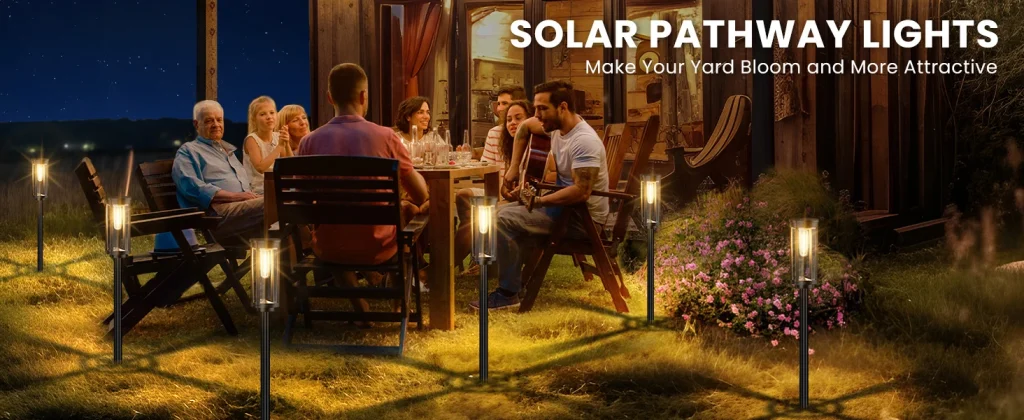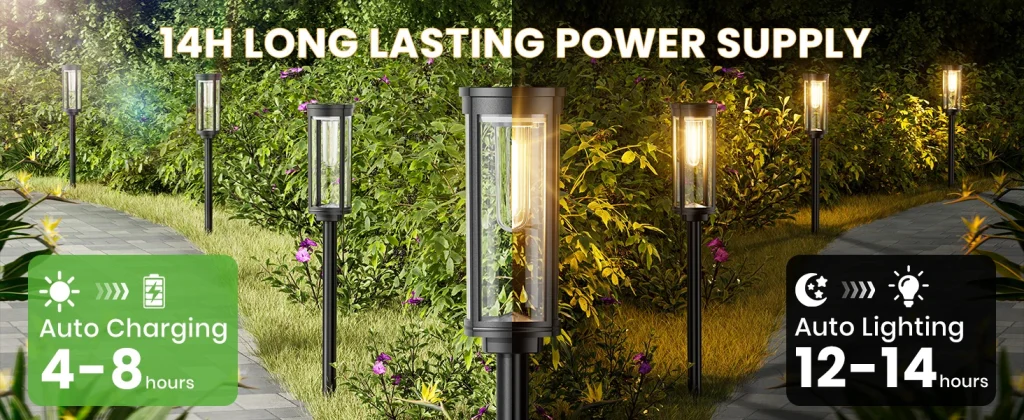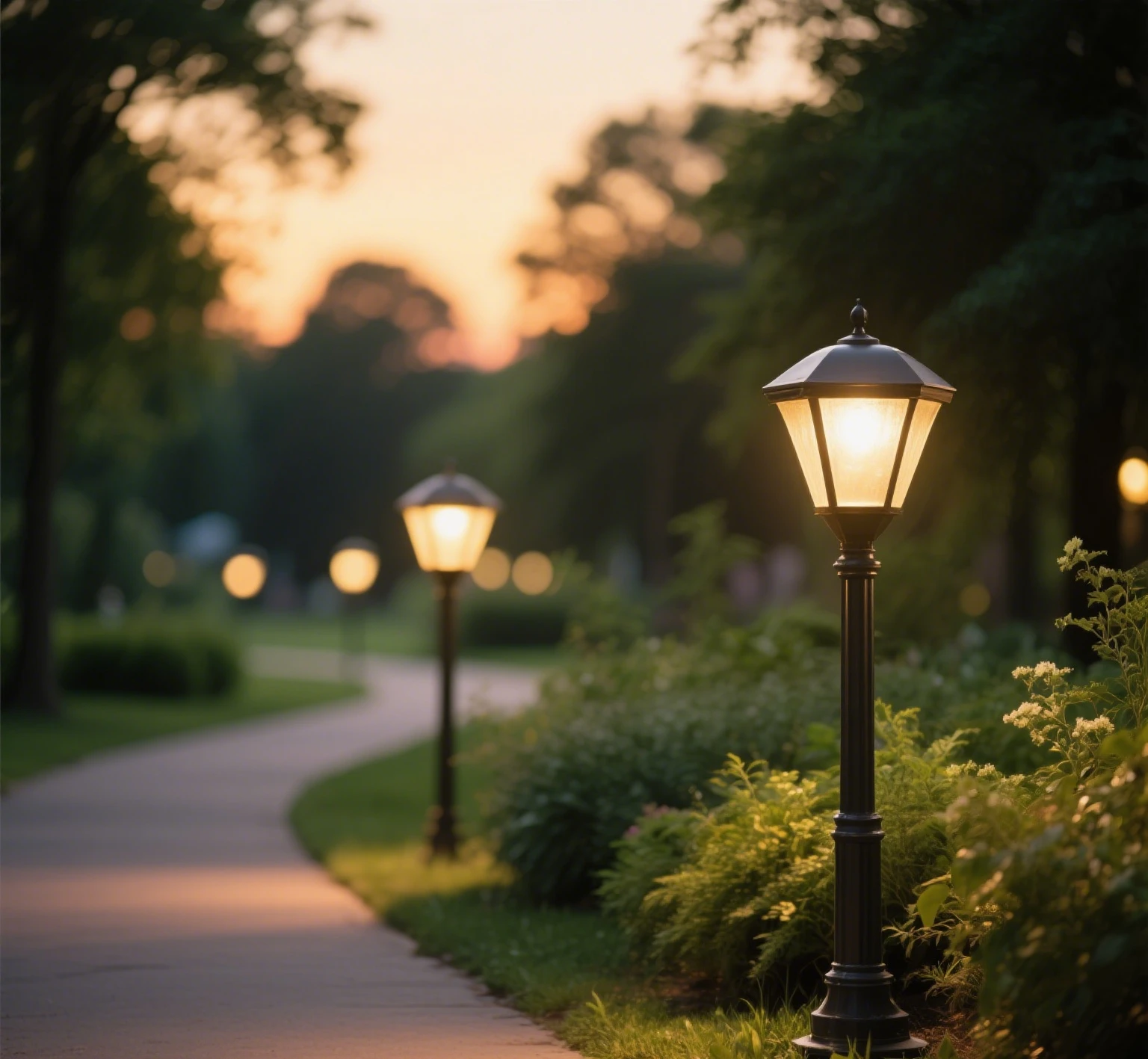Picking solar lights for your yard can feel like a tug-of-war. Lithium or lead-acid batteries? Motion sensors or always-on glow? One big panel or one per light? Most advice just lists pros and cons without tying them to your actual needs—your yard size, local weather, or how you use the space. This guide tackles five common dilemmas, breaking them down with real-world scenarios across U.S. regions. Each option comes with a “best for” list to help you zero in on what works for your setup, saving you from buyer’s remorse.

Dilemma 1: Lithium vs. Lead-Acid Batteries
The battery powers your solar lights, and choosing the right one depends on where you live and how you use them.
- Lithium Batteries: Lightweight (a third of lead-acid’s weight) and long-lasting (1000 charge cycles). Great for portable lights like lanterns or strings. They lose 40% capacity at -20°C, so they’re ideal for warm climates like California or Texas.
- Best for: Small yards, portable setups, or warm regions (e.g., Austin patios).
- Lead-Acid Batteries: Heavy but cheaper (half the cost) and better in cold (only 20% capacity loss at -20°C). Perfect for fixed lights like post lamps.
- Best for: Large yards, cold climates like Minnesota or Alaska, fixed installations.
I saw a friend in Minneapolis swap to lead-acid for their path lights after lithium ones kept dying in winter—steady glow ever since.
- Best for: Large yards, cold climates like Minnesota or Alaska, fixed installations.
Dilemma 2: Motion-Sensing vs. Always-On Lights
Do you want lights that flick on when needed or stay steady all night?
- Motion-Sensing Lights: Save 60% power by lighting up only when triggered (8-10m sensor range is ideal to avoid missed detections). Perfect for security in front yards or near garages.
- Best for: Driveways, entryways, or low-traffic areas (e.g., Phoenix front yards).
- Always-On Lights: Stable glow for consistent lighting. Adjustable brightness (dim to 50% after 10 p.m.) saves energy while keeping patios or gardens cozy.
- Best for: Backyard dining areas, plant beds, or social spaces (e.g., Seattle patios).
A neighbor in Florida uses motion-sensing solar lights for their gate but always-on ones for their deck—keeps the vibe right without wasting juice.
- Best for: Backyard dining areas, plant beds, or social spaces (e.g., Seattle patios).
Dilemma 3: Centralized vs. Independent Power
How your lights get their power affects cost and flexibility.
- Centralized Power: One large solar panel (≥10W) powers multiple lights, cutting costs by 30% and simplifying wiring. Best for small yards (≤200㎡), but keep cables under 20m to avoid voltage drop dimming distant lights.
- Best for: Compact yards or uniform layouts (e.g., suburban California homes).
- Independent Power: Each light has its own panel, offering placement freedom and no voltage loss. Costs more but suits sprawling or irregular yards.
- Best for: Large yards (≥300㎡) or split zones like front and side yards in Texas.
I’ve seen centralized setups work great in tight urban yards, but my cousin’s sprawling Oregon lot needed independent panels for flexibility.
- Best for: Large yards (≥300㎡) or split zones like front and side yards in Texas.

Dilemma 4: IP65 vs. IP68 Waterproofing
Waterproofing matters when your lights face rain, sprinklers, or splashes.
- IP65: Handles heavy rain and splashes, covering 90% of outdoor needs. Affordable and reliable for most U.S. homes.
- Best for: Standard yards, wall or post lights (e.g., Colorado patios).
- IP68: Can survive 1m underwater submersion. Essential for poolside areas, water features, or heavy-rain zones.
- Best for: Rainy regions like Florida or Seattle, or near pools and rain gardens.
A buddy in Miami swears by IP68 for their pool deck after cheaper IP65 lights shorted out during a storm. Check your yard’s exposure before deciding.
- Best for: Rainy regions like Florida or Seattle, or near pools and rain gardens.
Dilemma 5: Wired Remote vs. Smartphone App Control
How you control your lights affects ease and functionality.
- Wired Remote: Simple, no Wi-Fi needed, and zero lag. Great for basic on/off or dimming, especially for older users.
- Best for: Simple setups, non-tech-savvy households (e.g., rural Ohio yards).
- Smartphone App: Offers timers, scene modes, and battery monitoring, syncing with Alexa or Google Home. Choose models with offline manual switches to avoid network-failure lockouts.
- Best for: Tech lovers or smart homes (e.g., Bay Area modern setups).
X posts often rave about app-controlled solar lights for scheduling, but a manual remote saved my aunt in Idaho when her Wi-Fi crapped out.
- Best for: Tech lovers or smart homes (e.g., Bay Area modern setups).
Scenario-Based Picks for Your Yard
Here’s how these choices come together for two common U.S. setups:
- Small California Yard (≤200㎡, Basic Needs): Go with lithium batteries (light, portable), motion-sensing lights (energy-saving security), centralized power (cost-effective), IP65 waterproofing (rain-ready), and a wired remote (easy for all ages).
- Example: Bitpott’s 150-lumen wall lights with a 10W shared panel.
- Large Minnesota Yard (≥300㎡, Smart Home): Choose lead-acid batteries (cold-resistant), always-on adjustable lights (steady patio glow), independent power (flexible placement), IP68 waterproofing (snow-proof), and app control (smart-home sync).
- Example: Ring’s 200-lumen floods with 3000mAh batteries and app integration.
Check Amazon or X for user feedback on brands like URPOWER or Brightech to match your region’s weather and yard size.
- Example: Ring’s 200-lumen floods with 3000mAh batteries and app integration.
Avoiding Overhyped Features
Don’t get suckered by flashy specs. A 1000-lumen light might sound great but could drain a weak battery fast. Similarly, app-controlled lights are cool until your Wi-Fi drops. Always check battery capacity (≥2000mAh for lithium, ≥4000mAh for lead-acid), sensor range (8m+), and panel efficiency (≥18%). Recent X chatter warns about no-name brands with exaggerated lumens—stick to trusted names and real reviews.
Wrapping Up: Match the Light to Your Life
There’s no “best” choice in these solar light dilemmas—just the one that fits your yard, weather, and habits. Whether you’re securing a Texas driveway, cozying up a Seattle patio, or lighting an Alaska garden, these comparisons cut through the noise. Pick based on your region (warm or cold), yard size (small or sprawling), and needs (simple or smart). You’ll save cash, avoid duds, and get a setup that works night after night.

Comments